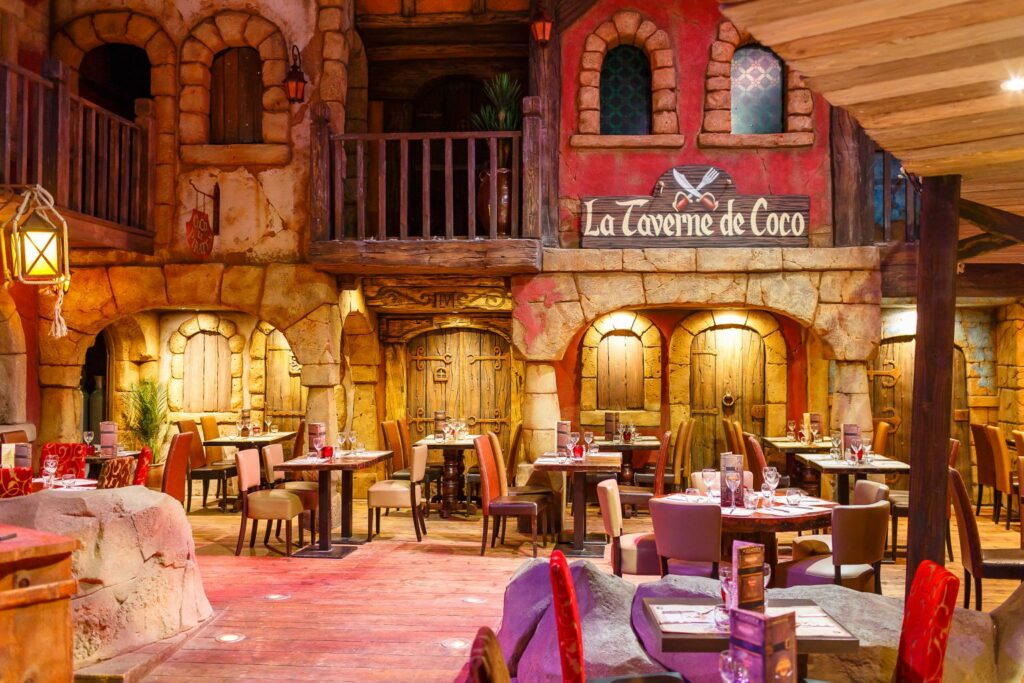The growing trend of experiential dining
In recent years, immersive dining has emerged as a distinct trend within the broader foodservice sector, blurring the lines between gastronomy, entertainment, and sensory design. Often referred to as “experiential dining,” this concept aims to offer more than just a meal—it seeks to create a multi-sensory experience that engages sight, sound, smell, and even storytelling.
While the notion of themed restaurants is not new, today’s immersive venues are taking the experience a step further. They incorporate advanced audio-visual technology, theatrical performances, and interactive elements to transform the act of dining into a full-fledged event. This shift is particularly relevant to hospitality professionals and food industry stakeholders, as it reflects evolving consumer expectations around value, engagement, and innovation in dining spaces.
One early example in France is Pirate’s Paradise, a restaurant with locations in Lille and Montpellier that combines a pirate-themed setting with live shows, acrobatics, and visual effects. Guests dine surrounded by shipwrecks, fire shows, and costumed performers. The concept has proved commercially successful, tapping into family-oriented entertainment and group dining.

At the other end of the spectrum, the Ephemera Group has developed a series of restaurants that change theme and atmosphere entirely every few months. Relying on immersive technologies like projection mapping and custom soundscapes, venues such as Under the Sea, Space Odyssey, and Jungle Palace offer guests an experience closer to a theatre set than a traditional dining room. These temporary concepts are designed to feel ephemeral and unique, encouraging repeat visits and social media engagement. Their business model also reveals an agile approach to supply chain and menu development, with dishes often tailored to each new theme.
The rise of immersive dining is not limited to France. In the United States, companies like Dining in the Dark, and platforms like Hidden Media Network with their notable Alice Cocktail Experience, are bringing immersive gastronomy to a broader public. These formats often operate on a ticketed model, with prices reflecting both the culinary offering and the cost of the production.
Industry observers point to several drivers behind this trend. The growing role of social media in shaping consumer habits encourages dining that is not only tasty but also “shareable.” Immersive dining also aligns with wider movements in hospitality towards differentiation and added value—particularly in competitive urban markets.
However, the model is not without challenges. The need to regularly refresh the setting and menu implies higher creative costs and tighter operational coordination. Moreover, the use of technology and design elements often requires partnerships with specialists outside the traditional food industry.
For agri-food professionals, this trend represents both a challenge and an opportunity. Suppliers who can adapt products to themed menus, or who can provide ingredients with strong visual or narrative appeal, may find new avenues for collaboration. Similarly, producers focused on traceability and origin stories may align well with immersive concepts that place storytelling at the heart of the experience.
As immersive dining continues to evolve, its impact on sourcing, menu development, and food presentation is likely to grow—inviting stakeholders across the agri-food value chain to engage with this innovative segment of the restaurant landscape.
Image credit: Image credit: Ephemera Group
Join us at SIAL Paris as exhibitor Join us at SIAL Paris as visitor
